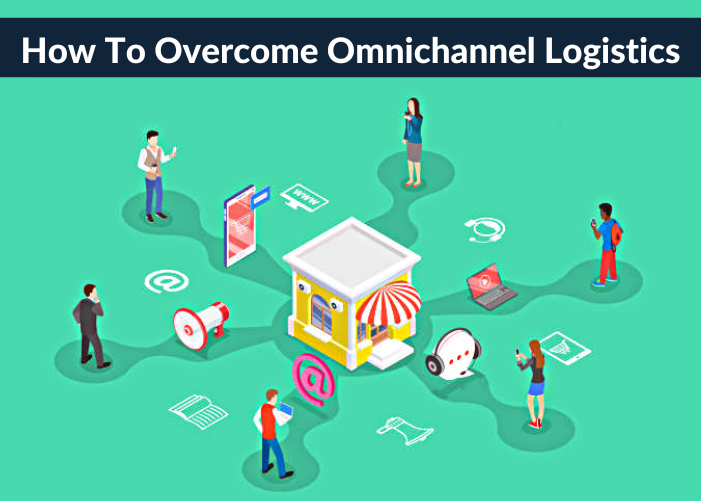Summary
Modern consumers want their products delivered at their convenience, at competitive rates, with enough payment modes, and enough options for delivery-window!
The only way to achieve this is to run a seamless and efficient omnichannel logistical operation with the help of modern tech tools and systems.
What is Omni-Channel Logistics?
Omni-channel logistics could be described as the process that combines production, inventory, and distribution across all sales channels, whether traditional offline channels like brick-and-mortar stores or modern online channels like eCommerce sites and social media.
Eco-systems can achieve seamless omnichannel logistics only when all supply-chain stakeholders, such as manufacturers, distributors, wholesalers, and retailers, work together in tandem toward the common goal, i.e., providing delightful customer service.
What are some challenges in omni-channel logistics?
The phenomenon of online shopping has created a paradigm shift in consumer behavior. The modern consumer shops in myriad ways, he does so 24*7, and he buys everything from apparel to medicine, electronics to groceries, furniture to holidays, and more! To add to that, consumers are forever impatient and driven by instant gratification!
But, what does all this translate into for businesses? It means that suppliers have to be available with ready inventory 24*7. And, since delivery time is a prime determinant in the customer’s consideration set, it’s delivery logistics – including the omnichannel setup – have to be on cue all the time.
As you can imagine, this isn’t an easy task and Logistics Managers are constantly faced with severe roadblocks and challenges.
Let’s look at some:
1) Siloed logistics processes: The truth about markets today is that they are one big global ecosystem these days. For example, an order received from a customer in London is shipped from a storehouse in Singapore with parts that are assembled for production from all over Asia. Boundaries, it would seem, no longer exist. The problem with supply chains is that they have traditionally tended to work in silos, with limited interoperability between them—such disjointed systems are the greatest roadblocks to building omnichannel logistics.
2) Legacy(manual) inventory systems: Unfortunately, many companies still use manual inventory management systems that make it impossible to provide today’s customers with the real-time visibility and transparency that they are now accustomed to. Additionally, this results in errors of inaccurate data, delays in order fulfillment, and prevents the creation of a seamless omnichannel network.
3) Modern technology: Delivery logistics – such as 24-hour delivery and same-day delivery-are fast becoming a critical differentiator for consumers choosing between you and your competitors.
Without adopting modern tech-driven systems like dispatch software, cloud-based global systems (etc.), it becomes impossible to meet customer demands in today’s frenetic business world that operates 24*7 across borders and time zones.
4) Inefficient reverse-logistics: Well, order returns are the inevitable truth of online shopping-the yin to the yang, the shadow to the sun!
Customer experience – including the reverse logistics process – is key to customer retention. And, without solid omni-channel logistics in place, it would become pretty much impossible to manage order returns. Don’t forget that a customer returns an order due to some sort of shortfall – to top that, if the return experience is unsatisfactory, you will have a seriously irate customer who would unlikely return. Your reverse logistics process must be digitized and simplified so that it becomes an asset in your omnichannel network.
5) Poor selection of 3PLs: Selecting a 3PL that matches your business requirements is paramount to the success of the partnership. However, companies often land up making the selection by using the wrong parameters, such as rates and reputation, without paying attention to relevant KPIs like expertise in their industry, and knowledge about routes/locations where they need to supply goods or procure material from.
Five knobs for omnichannel logistics success
The following five knobs are critical in ensuring omnichannel success:
1) Warehouse automation: Surprisingly, many logistics firms still operate warehouses that are essentially manual. Not only is automation becoming increasingly necessary for meeting the exacting standards of today’s logistics, but it is also critical in several other areas, such as maintaining cost-efficiency, managing vast numbers of e-commerce-led SKUs, multiple touch-points, and managing inventory, and supply-chain (etc.).
The tradeoff between Cost vs. Efficiency is a constant battle and only with sufficient automation can this be achieved by 3PLs in today’s world of complex logistics.
2) Data-analytics, APIs, and integration: As mentioned above, unless logistics players adopt modern automation, it is impossible to operate per today’s benchmarks. In addition to warehouse automation, a 3PL system must be nimble, flexible, and integrate easily with the numerous stakeholders that it works with across the supply chain.
3) Heavy CapEx in a fluctuating eco-system: Having pointed out the above, bear in mind that it is never an easy task to achieve. Automation – along with other CapEx like a warehouse, fleet vehicles (etc.), is expensive and has long gestation periods. However, demand for 3PL services often tends to follow significant peaks and valleys. For example, demand is often two-three times higher during holiday periods and other promotional events like “Amazon-Day”. Preparing resources for normal periods versus peak periods is always a tough call.
A good idea would be for all stakeholders, including contract players, to agree on a convenient “Base+ Model” where clients and logistics firms can agree on a fixed cost that covers their base volumes across a 12-month cycle while factoring in rates and resources required during peak demand times.
4) Logistics firms must maintain a healthy client-mix: 3PLs must maintain a healthy client mix across industries, size of business, locational preference (etc.) to achieve a profitable year-long operation by selling their warehouse space and services and staying gainfully deployed across all channels year-round.
5) Last-mile delivery: Perhaps, the most important aspect of conquering omnichannel logistics is the “culmination” of all other knobs. Logistics firms that don’t get their last-mile delivery right will, sooner than later, fail.
Conversely, running a robust last-mile delivery operation will ensure speedy deliveries, efficient cost-management, resource optimization, flexibility, and deep insight generated via advanced data analytics (etc.). All this, ultimately, leads to efficient omnichannel management and customer retention.
Conclusion: As is evident, acing the omni-channel logistics operations of today’s complex supply-chain networks is not an easy task. It requires significant effort, planning, and investment. Importantly, adopting modern tools like last mile delivery software is critical-to-success.




